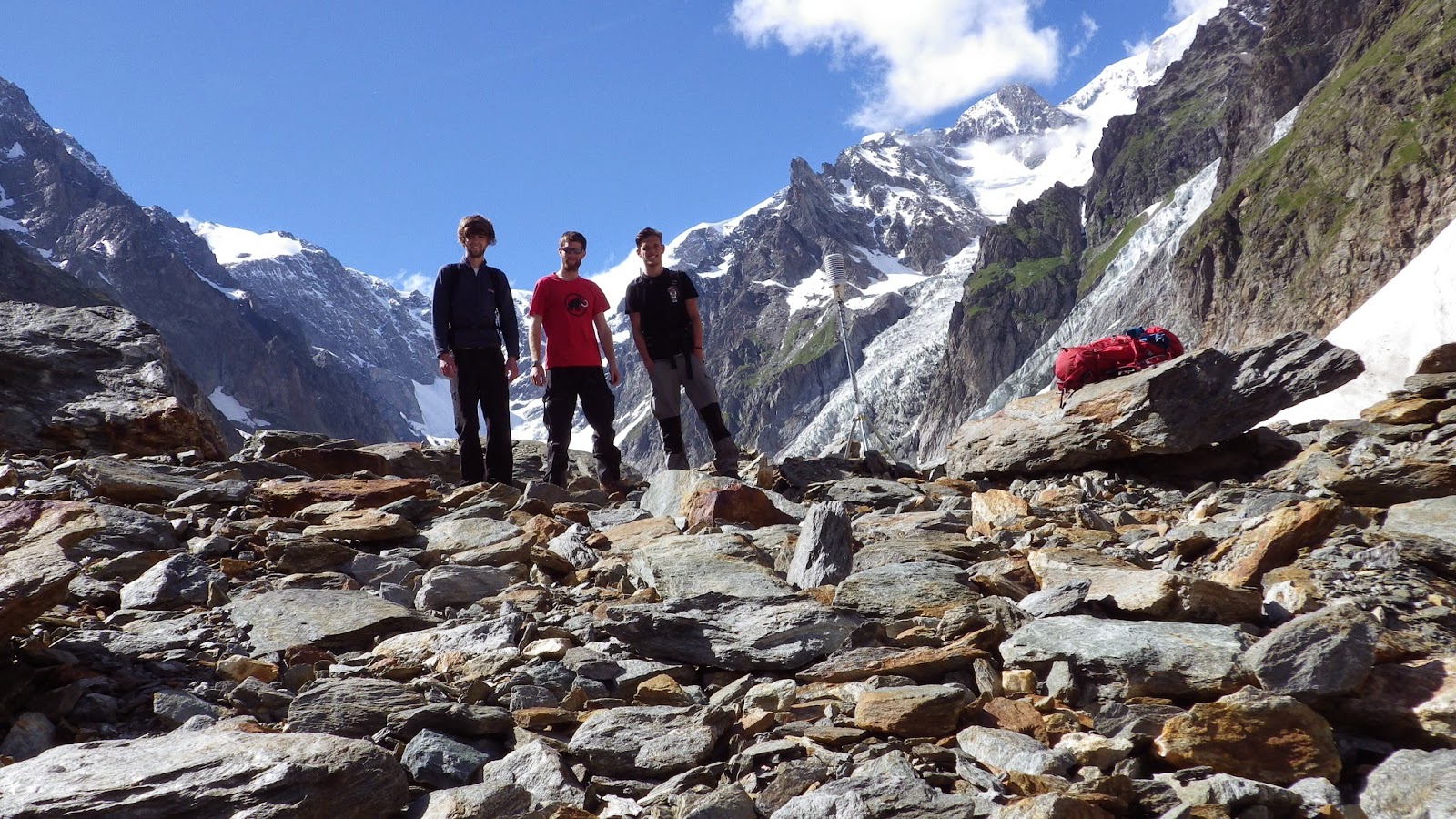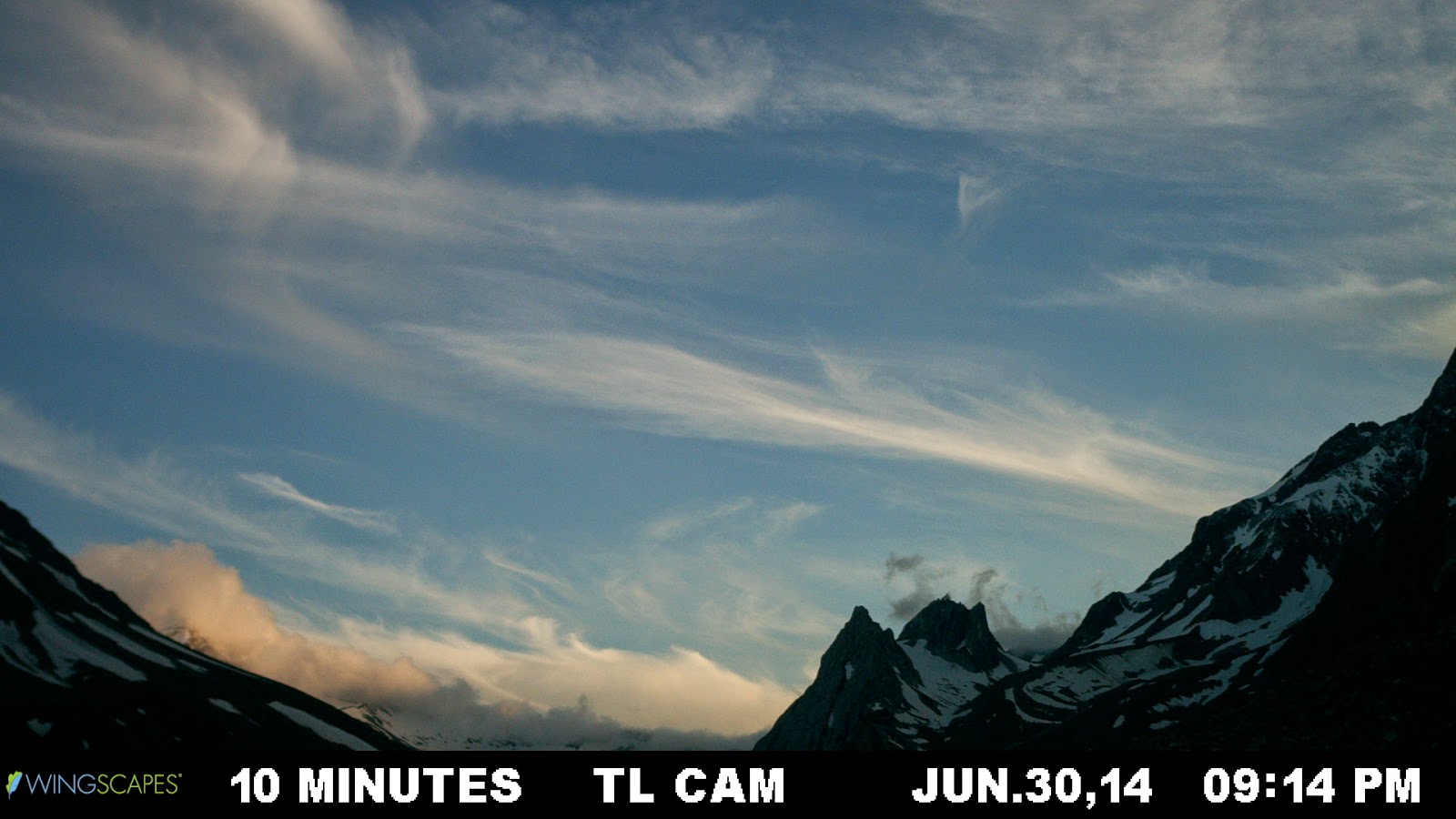A pretty fantastic summer has come to end... though i'm a little late with reluctantly welcoming the autumn. The summer months have been a wonderful mixture of Alpine adventure as part of the
RGS Land Rover Grant and some PhD research at the foot of the impressive Mt Blanc Massif (and the associated sights that come with it). After having just finished my fieldwork for the first year on the
Miage debris-covered Glacier, it makes you reflective on what problems can occur during glaciological fieldwork, how important it can be and how annoyed it can make you.
Fieldwork last week consisted of 4 days of back-breaking transportation of tripods, weather stations and dataloggers over 10.5km squared of loose and slippery debris. The following are the primary things that went wrong for us:
1. Stolen timelapse camera
To monitor the retreat of the snowline on the upper part of the glacier for running a distributed energy balance model, an expensive Harbortronics camera was mounted on the opposing valley and 'secured' to a large un-movable boulder (for me) sticking out from the ground. As the camera was placed somewhere off-track and out of sight, the return to the site with a GPS in hand was almost necessary to get to the spot exactly after a 300-400m climb from the main route past the glacier. To my surprise the boulder to which it was attached was smashed and the no trace of the camera was left.
- Important?
The data would have been useful and informative, though not crucial to my project... just an expensive camera
-Level of anger?
HULK SMASH (sad that nothing is safe, not even for research)
2. Flat tyre
A nice rental of a Skoda Superb (it was good... superb?? not sure) from Geneva airport gave us the space we needed to wedge all of our equipment in and return it to our storage location in Courmayeur. Following a fantastic pizza from our usual favourite in the town, our journey back to the valley was met with an unfortunate hole in the road and a completely flat tyre. Due to the inability to remove new car tyres without better tools and likely a health and safety concern, we were surprised to find a spare tyre hole with a lack of a tyre and just some puncture 'goo' not to dissimilar to what you put in your bike tyre to prevent punctures.... unsurprisingly it didn't work, though was designed as a 10 minute assistance anyway.
-Important?
The hassle to fix this was more of a cost to time (we lost our ride up the valley) and left us a man down for a while.
-Level of anger?
**it happens. It was already 10pm when it happened, we just wanted to go to sleep... :)
3. Pro-glacial station somewhere in the Med.
Following 82mm+ rainfall during ~24th August (I wasn't there at this time) a major flood and the drainage of the ice-contact Lake Miage occurred (see below). The destruction to the area beyond the main portal (exit) of water from the sub-glacial system was incredible, with new water routes carved into part of the glacier and much of the original river walls. Unfortunately we were operating a pro-glacial station to measure changes in water depth and electro-conductivity of the material held in the melt water. Again following our GPS led to an unhappy result.... our GPS informed us a further 5m forward would bring us to our location.... down a steep bank into the now-centre of the river. Now these GPS units have a variable accuracy and would sometimes position us somewhere between the original pro-glacial station and Texas.. but it was clear to see that it wasn't here anymore.
The former image of the Miage Lake and two pictures of the drained lake and the crater remaining
Just a small part of the damage caused by the flood and the GPS with location of the station 5m ahead.
-Important?
The data again was supportive, though not crucial.
-Level of anger?
To be honest... the destructive power of nature was just impressive... it sucks to lose useful data and a good datalogger.... but its hard to argue with this one.
4. Waterproof temperature logger?
One important piece of data since mid-August that is potentially lost derives from a waterlogged temperature logger which was tightly sealed and considered waterproof. One of the veteran stations from the April set-up had given up on me and became the only casualty of the main dataset this season.
-Important?
Yes! Though the data for the rest of the stations is present and still comprises a unprecedented dataset of this nature over a debris-covered glacier to my knowledge.
-Level of anger?
I'm not angry... i'm just disappointed.
5. R.I.P. Camelbak
Following shifting a lot of heavy equipment in my backpack down the glacier, a quick lean against a rock to take the weight of my pack off me with taking it off and putting it back on in struggle resulted in a popped water pack :(
-Important?
Water is always important...
-Level of anger?
As fed up as anyone with a wet arse and no more drinking water
Ultimately, this felt like a slightly cursed trip to the Alps... but things could have been much worse. Looking at the wider-picture, it becomes clear that bad things often happen with this type of fieldwork and projects may have to adjust to what is available.... I'm just glad that my hasn't changed too much.
Now on to the data-processing!
























.jpg)


.png)





















